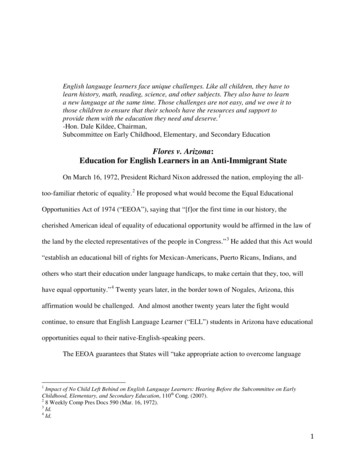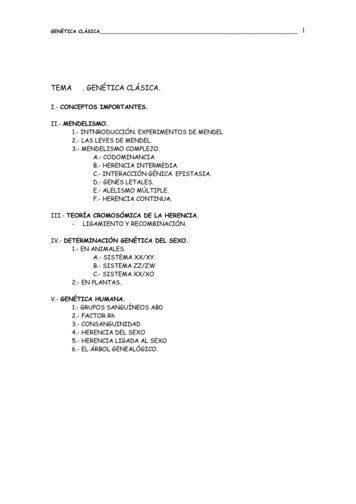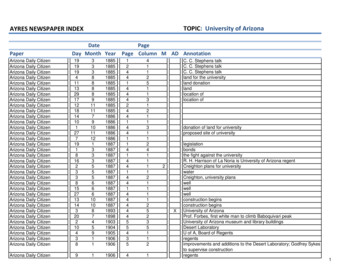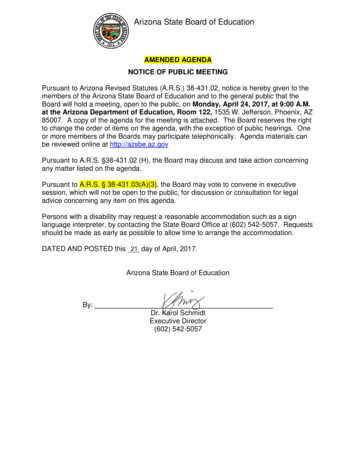
Transcription
Karina SmithWriting RequirementProfessor Sugarman5 November 2011English language learners face unique challenges. Like all children, they have tolearn history, math, reading, science, and other subjects. They also have to learna new language at the same time. Those challenges are not easy, and we owe it tothose children to ensure that their schools have the resources and support toprovide them with the education they need and deserve. 1-Hon. Dale Kildee, Chairman,Subcommittee on Early Childhood, Elementary, and Secondary EducationFlores v. Arizona:Education for English Learners in an Anti-Immigrant StateOn March 16, 1972, President Richard Nixon addressed the nation, employing the alltoo-familiar rhetoric of equality. 2 He proposed what would become the Equal EducationalOpportunities Act of 1974 (“EEOA”), saying that “[f]or the first time in our history, thecherished American ideal of equality of educational opportunity would be affirmed in the law ofthe land by the elected representatives of the people in Congress.” 3 He added that this Act would“establish an educational bill of rights for Mexican-Americans, Puerto Ricans, Indians, andothers who start their education under language handicaps, to make certain that they, too, willhave equal opportunity.” 4 Twenty years later, in the border town of Nogales, Arizona, thisaffirmation would be challenged. And almost another twenty years later the fight wouldcontinue, to ensure that English Language Learner (“ELL”) students in Arizona have educationalopportunities equal to their native-English-speaking peers.The EEOA guarantees that States will “take appropriate action to overcome language1Impact of No Child Left Behind on English Language Learners: Hearing Before the Subcommittee on EarlyChildhood, Elementary, and Secondary Education, 110th Cong. (2007).28 Weekly Comp Pres Docs 590 (Mar. 16, 1972).3Id.4Id.1
barriers that impede equal participation by its students in its instructional programs.” 5 But theapplication of this federal law to states and local school districts has been a source of muchdebate. Parents in Nogales believed that their children did not receive the promised equaleducation, and thus began the almost twenty year legal challenge of Arizona’s evolving ELLprogram.The Fight for Equality Began on the Border with Spanish-Speaking PlaintiffsNogales, Arizona is a small town that shares its name, its heritage, and, to a certainextent, its language with its cross-border sister city, Nogales, Sonora, Mexico. 6 These two citiestogether are called Ambos Nogales, or Both Nogales, and in many ways function as onecommunity. Despite the international border separating the two cities, economic and socialactivity flows rather smoothly between them, as many families and businesses figurativelystraddle the border. 7 However, access between the two international counterparts is becomingincreasingly restricted. 8 Together these two cities have about 175,000 residents: about 25,000 ofthem living on the U.S. side of the border and the other 150,000 living on the Mexican side ofthe border. The main local English newspaper in Nogales, Arizona is Nogales International, withboth the U.S. and Mexican flags creating its logo. 9 The main Nogales, Sonora newspaper isNuevodía Nogales, written in Spanish and including in its local section news from Nogales andPhoenix, Arizona as well as from neighboring Mexican cities. 10Residents can relatively easily get around Nogales, Arizona speaking only Spanish. Manybusinesses in Nogales operate mainly in Spanish and rely on Mexican residents crossing the520 U.S.C.A. 1703.City of Nogales, Arizona Website (2011), ogales International (2011), ia Nogales (2011), http://www.nuevodia.com.mx/seccion/local/.62
border and purchasing food and goods to maintain a steady profit. 11 But these businesses aresuffering as fewer Mexican residents choose to cross the border due to the recession and thegrowing inconvenience due to immigration policy. 12 Since 2004, legal border crossings havedropped by about 1 million per year in Arizona. 13 As a result of the recession, many U.S.factories on the Mexican side of the border have laid off employees, meaning families now haveless money to spend in Arizona. 14 There is also additional security and hassle involved withcrossing the border, making it more convenient and feasible for Mexican residents to simplyutilize the resources they have in their much larger side of the joint community than to cross intoArizona and benefit “that” Nogales’ economy. 15The Nogales Unified School District (NUSD) serves approximately 6,200 students frompre-Kindergarten to high school. 16 Of these students, 98.48% are Hispanic. 17 About 28% ofNUSD’s students are classified as ELLs. 18 Given the fluidity across the border of the AmbosNogales community, there have always been children whose parents live on the Mexico side ofthe border who attend school on the U.S. side of the border because public U.S. educationprovides them with greater opportunity. 19Since 2004, republican officials have been trying to weed out the undocumented studentswhose parents reside in Mexico but who attend school in the U.S. 20 Some of these students crossthe border every day and some stay with relatives in Arizona on weekdays, visiting their parents11Peter O’Dowd, Nogales Diary: Border Town Sees Business Decline p?storyId 120062409.12Id.13Id.14Id.15Id.16Nogales Unified School District Website (2011), http://www.nusd.k12.az.us/index.cfm?pID 3374.17Id.18Nogales Unified School District Statistics e.19Tim Vanderpool, Southwestern Schools Root Out Illegal Pupils, THE CHRISTIAN SCI. MONITOR, (Mar. 26, sc.html.20Id.3
in Mexico on weekends or whenever they can. 21 Republicans complain that educating theseundocumented students costs a lot, and that the struggling education system cannot handle theextra burden they put on border school districts such as NUSD. 22 This year, conservativelegislators proposed that Arizona pass legislation that would require the parents of students toprovide proof of their children’s legal residency in the U.S. 23 The democratic minority joined bymoderate Republicans blocked this bill, but it shows the political struggle surrounding theeducation of Mexican-American students and the implications for their parents. 24 The debateabout the education of ELLs in Arizona, both documented and undocumented, and the fairallocation of funding continues in the community, the legislature, and the court.Miriam Flores, a Spanish-speaking Mexican-American mom, decided to get involved inlitigation when she saw the struggles her daughter, also named Miriam Flores, was having in herclasses as they switched from being taught partially in Spanish to being taught completely inEnglish. 25 Although she only spoke Spanish fluently, she desperately wanted her children toreceive a quality education, including learning English and all other subject matters. 26 The youngMiriam became frustrated because, despite her effort, all of a sudden she was receiving poorgrades. 27 When she was in third grade, the school district told her mom that she was not payingattention to the teacher and that she would be held back. 28 She explained to her mom that she didnot understand what the teacher was saying and had to ask her classmates to clarify. 29 Flores21Id.Id.23S.B. 1611, 50th Leg., 1st Sess. (Ariz. 2011).24Paul Teitelbaum, Anti-Immigrant Bills Defeated in Arizona Senate, WORKERS WORLD (Apr. 1, l news-phoenix az/.25Mary Ann Zehr, Roots of Federal ELL Case Run Deep, EDUCATION WEEK (Apr. 6 /28flores.h28.html.26Id.27Id.28National Campaign to Restore Civil Rights (2011), 24
confronted the school district about her daughter not being able to understand the instructionbecause she did not understand English well enough, but the school district told her it was nottheir problem. 30 Flores agreed to be a plaintiff, and hoped that the litigation would allow herchildren, and all children, to attain the education she envisioned for them. 31Education of ELL StudentsFive different English language acquisition programs dominate within school districts inthe U.S.: an English-language monolingual program, where ELLs are in mainstream classroomswith English-proficient peers and only English is spoken; an ge program, where ELLs are in mainstream classrooms, but work with aspecialist who provides extra language support (in either the pull-out or push-in model); atransitional bilingual education program, where ELLs receive instruction in English and theirnative language, with English gradually replacing the native language; a maintenance bilingualeducation program, where ELLs receive instruction in both English and their native language,with the goal being to develop proficiency in both languages; and a structured immersionprogram, where all instruction is in English, but in a manner designed to be easier ELLs tounderstand. 32 Educators and researchers disagree about the merits of each program, withdifferent studies finding different programs more or less effective. 33 This lack of consensussurrounding English language acquisition has led to legal and political debate. 34 Others beforeMiriam Flores attempted to change the way schools funded and planned ELL programs as well.30Id.Zehr, supra note 25.32Andrea Honigsfeld, ELL Programs: Not “One Size Fits All,” 45 KAPPA DELTA PI RECORD 166, 167 (Summer2009).33Id. at 171.34See, e.g., Lau v. Nichols, 414 U.S. 563 (1974); Horne v. Flores, 129 S. Ct. 2579, 174 L. Ed. 2d 406 (2009);Castaneda v. Pickard, 648 F.2d 989 (5th Cir. 1981); Ariz. Rev. Stat. Ann. § 15-752 (2000).315
Federal law regarding the education of ELL students gained national attention in 1974with Lau v. Nichols. 35 In this case, Chinese-American plaintiffs in San Francisco challenged theschool system for putting non-English speakers in a “regular” classroom and then ignoring them,thus denying them access to all education. 36 The Civil Rights Act of 1964 and its definingguidelines required “federally funded school districts to address any obstacles to learning posedby enrolled students' lack of English language proficiency.” 37 Even though California purportedto provide “equal” education to all students, the Supreme Court acknowledged that this “equal”education was only nominal when no efforts were made to ensure ELL students could access thecurriculum. 38 The Supreme Court determined that the lack of English language instruction forELLs violated Title VI of the Civil Rights Act. 39Both Congress and the Department of Health, Education, and Welfare (“HEW”)responded to this Supreme Court opinion: 40 Congress enacted the EEOA, and HEW issued “LauGuidelines” to assist schools in complying with Title VI. 41 The Fifth Circuit addressed both ofthese in Castaneda v. Pickard. 42 Castaneda limited the scope of the “Lau Guidelines” in holdingthat a school district did not violate them. 43 It described the guidelines as applicable only to“school districts which, as a result of Lau, were in violation of Title VI because they failed toprovide any English language assistance to students having limited English proficiency.” 44Castaneda also specified that the “Lau Guidelines” were not binding and suggested that, as long35Lau v. Nichols, 414 U.S. 563 (1974).Id.37Thomas F. Felton, Sink or Swim? The State of Bilingual Education in the Wake of California Proposition 227, 48Cath. U. L. Rev. 843, 855 (1999). 35 Fed. Reg. 11,595, 11,595 (1970).38See Lau v. Nichols, 414 U.S. 563 (1974).39See Lau v. Nichols, 414 U.S. 563, 566 (1974).40Felton, supra note 37.41Id.42Castaneda v. Pickard, 648 F.2d 989 (5th Cir. 1981).43Id. at 1006.44Id.366
as a school district choose any one of many acceptable language remediation plans, it wouldcomply with Title VI. 45 On the other hand, Castaneda bolstered the EEOA and set out importantbenchmarks against which schools are to be measured in determining whether they meet theirEEOA obligations. 46Castaneda v. Pickard’s EEOA TestThe three-part test established by the Fifth Circuit in 1981 in Castaneda v. Pickard fordetermining if bilingual education programs meet the requirements of the EEOA recognizes thatstate and local authorities have substantial latitude in choosing how to educate their ELLstudents, but requires a “genuine and good-faith effort, consistent with local circumstances andresources, to remedy the language deficiencies of their students.” 47 While it does not questionhow local resources are acquired, it puts the responsibility on the State to ensure that local schooldistricts have the resources necessary to assist ELL students. 48In applying the test, the court must first carefully examine the soundness of theeducational theory underlying the challenged English language acquisition program and ascertainwhether the “school system is pursing a program informed by an educational theory recognizedas sound by some experts in the field or, at least, deemed a legitimate experimental strategy.” 49But “appropriate action” as required by the EEOA requires more than just the adoption of asound theory. The second step of the test looks at whether the system follows through withpractices, resources, and personnel reasonably calculated to transform the chosen educational45Id.Id. at 1009-10.47Id. at 1009.48Id.49Id.467
theory into reality. 50 And the third part of the test requires the court to evaluate the on-goingsuccess of the adopted education program:If a school’s program, although premised on a legitimate educational theory andimplemented through the use of adequate techniques, fails, after being employed for aperiod of time sufficient to give the plan a legitimate trial, to produce results indicatingthat the language barriers confronting students are actually being overcome, that programmay, at that point, no longer constitute appropriate action. 51In Castaneda, the English acquisition program failed at the second step of the test; whilesound in theory, the Fifth Circuit found deficiencies in the program’s implementation due to theinadequate efforts “made to overcome the language barriers confronting many of the teachersassigned to the bilingual education program.” 52 Thus, the remedy required the school district to“undertake further measures to improve the ability of any teacher . . . to teach effectively in abilingual classroom.” 53Since the Fifth Circuit applied this test to bilingual education programs under the EEOA,“[n]o Circuit Court has denied its validity.” 54Origins at the District CourtFlores v. Arizona got off to a slow start. William E. Morris originally filed the case onbehalf of plaintiffs from Nogales and Douglas that eventually dropped out of the litigation. 55 Hewas an attorney with Southern Arizona Legal Aid, a non-profit law firm striving “[t]o providequality legal service to people who would not otherwise have equal access to justice, in ways50Id. at 1010.Id.52Id. at 1013.53Id.54Horne v. Flores, 129 S. Ct. 2579, 2610, 174 L. Ed. 2d 406 (2009) (dissent).55Telephone interview with Timothy M. Hogan, Executive Director, Arizona Center For Law in the Public Interest(Mar. 2, 2011) [hereinafter Hogan interview].518
which affirm the individual and collective dignity, integrity, and power.” 56 A few years into thepre-trial preparation, Morris recruited Tim Hogan of the Arizona Center for Law in the PublicInterest because of his experience with school finance litigation and familiarity with Arizonapublic education. 57 A couple of years after Hogan joined, they recruited Miriam Flores and herdaughter to serve as new named plaintiffs of the class of “all minority ‘at-risk’ and limitedEnglish proficient children now or hereafter, enrolled in [NUSD] as well as their parents andguardians.” 58 They selected Flores because she fit the mold of plaintiff they desired and becauseshe trusted the legal process enough to give this litigation a shot. While she did not play a largerole in the direction of the litigation, Flores did open herself and her family to questions abouttheir education, their choices, and their livelihoods. Morris and Hogan hoped that through thislitigation, Arizona would provide ELL students in Nogales and elsewhere with an appropriateeducation that ensured English acquisition along with complete subject matter instruction equalto that received by English-proficient students. They saw the program used to educate ELLs asinsufficient and the amount of resources used to educate the large number of ELL students inNUSD as severely inadequate for their needs. 59 While Morris and Hogan initially envisioned thislitigation as only directly challenging practices in Nogales, Arizona’s attorney general requestedthat the entire state be included in the case and request for relief. 60Morris initially filed the action seeking declaratory relief in federal court in 1992, but dueto various delays, no decision was made on the merits of the case for eight years, after Hoganand Flores had both joined the litigation. 61 The dilatory procedural history of this case includes56Southern Arizona Legal Aid, Inc. (2004), http://www.sazlegalaid.org/mission.htmlHogan interview, supra note 55.58Id.; Flores v. Arizona, 405 F. Supp. 2d 1112, 1120-21 (D. Ariz. 2005) vacated and remanded sub nom. Flores v.Rzeslawski, 204 F. App'x. 580 (9th Cir. 2006).59Hogan interview, supra note 55.60Id.61Id.579
motions to amend and dismiss, certification as a class action, and repeated extensions ofdeadlines among other things. 62In April of 1999, the District Court finally set trial “to determine Plaintiffs’ charge thatDefendants [were] violating federal law in their oversight of Lau programs in Arizona’s schooldistricts,” 63 to determine whether Arizona’s “financing scheme enable[d] school districts toimplement effective Lau programs,” 64 and to analyze evidence “relevant to establish the successor failure of the Lau programs.” 65 The court held a three-day bench trial in August of the sameyear, and on January 24, 2000, generated sixty-four “Findings of Fact” and eleven “Conclusionsof Law” finding for the Plaintiffs on the EEOA issue and three “Conclusions of Law” findingagainst the Plaintiffs’ Civil Rights Act Claim. 66The findings of fact highlight various deficiencies within NUSD and Arizona as a whole.They explain the intricacies of how Arizona allocated money to fund the education of ELLstudents, the various types of English acquisition programs schools in NUSD implemented, thelack of qualified ELL and bilingual instructors, the lack of resources for NUSD’s languageacquisition programs, and NUSD responses to the Office for Civil Rights’ 1992 compliancereview. 67 Based on these findings of fact, the court concluded, among other things, that “[t]heState’s minimum 150 appropriation per ELL student, in combination with its property basedfinancing scheme, [was] inadequate and . . . resulted in the following Lau program deficiencies:1) too many students in a classroom, 2) not enough classrooms, 3) not enough qualified teachers,including teachers to teach English as a Second Language and bilingual teachers to teach content62Flores v. Arizona, 48 F. Supp. 2d 937, 942-44 (1999).Id. at 955.64Id. at 956.65Id. at 957.66Flores v. Arizona, 172 F. Supp. 2d 1225 (2000).67Id. at 1225-37.6310
area studies, 4) not enough teacher aides, 5) an inadequate tutoring program, and 6) insufficientteaching materials for both ESL classes and content area courses.” 68 Under Castaneda v.Pickard’s three-part EEOA test, these deficiencies violated the second part of the test “becausethe State . . . despite the adoption of a recognized Lau program in NUSD, the State has failed tofollow through with practices, resources, and personnel necessary to transform theory intoreality” and Arizona’s “arbitrary and capricious Lau appropriation is not reasonably calculated toeffectively implement the Lau educational theory which it approved, and NUSD adopted.” 69Based on these conclusions of law, the court ordered declaratory relief in favor of the Plaintiffs,requiring the State to take certain actions, explained below, regarding its allocation of fundingfor ELL students in NUSD (and thus all of Arizona’s school districts because of Arizona’sConstitution’s school district uniformity requirement). 70Legislative Resistance to Court OrdersThe declaratory relief granted at the beginning of 2000 satisfied, however briefly, TimHogan, Bill Morris and Miriam Flores. The court noted that the State Legislature must followthrough with the cost study it said it was conducting “to determine the amount of fundingprovided by the State and Federal governments for English instruction of ELL students and theamount of money being spent by schools to educate those students.” 71 Additionally, Plaintiffsentered into a consent order with the State providing for “procedural and substantive revisions tothe State Lau programs.” 7268Id. at 1239.Id.70Id. at 1240.71Flores v. Arizona, 160 F. Supp. 2d 1043, 1044 (2000).72Id. at 1045. See Speaker of the Arizona House of Representatives v. Flores, 2009 WL 483939 (U.S.), 19 (U.S.2009).6911
Sadly, in March of 2000, Morris passed away, leaving Hogan as lead counsel on the case.Despite this setback, things seemed to be looking up for young Miriam: She was in junior high,and this ruling could improve the instruction she received in high school, improving her chancesof going to college and fulfilling her dream. By this time, through much practice inside andoutside of school, her English had improved and she was becoming more successful in herclasses, but she and her mom knew there was more that the school should be doing to make sureshe was getting the well-rounded education other native English-speaking students received. 73The gratification was short-lived, however, as the State did not follow through with itsstudy, arguing that it should be allowed an additional two years to complete it. The newlyestablished English as a Second Language and Bilingual Education Study Committee hadsubmitted its cost-study report to the Governor’s office as planned, but Judge Marquez noted thatit did not contain the recommendations for funding levels necessary to establish a minimum basefunding level for Lau programs that would not be arbitrary and capricious. 74 Plaintiffsaccordingly requested that the legislature perform the ordered cost study, but a Senate bill andvarious amendments that would have provided funding for the cost study were defeated and thelegislative session ended without action. 75 Governor Hull convened a special session oneducation and the legislature approved an increase in state sales tax for educational programs,but funding specifically earmarked for the cost study was denied, as was funding for Lauprograms “at a level reasonably calculated to make ELL students proficient in speaking,understanding, reading, and writing English.” 76 Because of this inaction, the plaintiffs went backto court and asked the judge to order the cost study be carried out by November 1, 2000, so that73Zehr, supra note 25.Flores v. Arizona, 160 F. Supp. 2d 1043, 1044 (2000).75Id. at 1045.76Id.7412
the legislature could appropriately fund the programs during its next legislative session at thebeginning of 2001. 77In response, the defendants claimed that because of the changes to the Lau programagreed to in the consent decree entered into in June 2000, the legislative session schedule, andreferendum item Proposition 203 to be voted on in November, the cost study should be delayed.Arizona would wait until changes to the program were implemented for a long enough time toevaluate their success, until the Department of Education met for a regularly-scheduledlegislative session to ask for funding to conduct the study, and until the results of the Proposition203 determined whether Arizona would adopt a one-year sheltered-English immersion (“SEI”)program and repeal bilingual education and other English-acquisition programs. Fortunately forthe plaintiffs, the court saw no reason to wait to conduct the cost study and to address the cost ofthe deficiencies of NUSD’s implementation of its adopted Lau model. 78 The court did not viewthe potential changes to Arizona’s English-acquisition programs as a persuasive reason to delaythe cost study, and saw the costs associated with any changes to NUSD’s program as similarenough to the existing program that the cost study should be conducted in a timely fashion, as theplaintiffs requested. 79Arizona complied with the court’s order to commission a cost study before its January2001 legislative session, but it failed to fund the Lau programs in response to the findings of thestudy. 80 Rather than research the actual cost of appropriately educating ELL students, thespecially-commissioned consulting group simply gathered data about how much money wasactually spent on ELL students in several districts nationwide and noted that NUSD spending77Id.Id. at 1046.79Id.80Flores v. Arizona, 2001 WL 1028369 (D. Ariz.) (2001).7813
was toward the bottom and thus might be inadequate to meet the unique needs of ELL students. 81The staff of several Democratic legislators also prepared a separate study estimating the cost ofeducating ELL students at 1,527 (more than 1,000 more than NUSD was spending per ELLstudent), which was ignored by the legislature. 82 Dismayed by Arizona’s continued failure toimprove its English-acquisition programs, the plaintiffs again sought the court’s help. This time,plaintiffs requested that the court set a deadline for Arizona to remedy the arbitrary andcapricious nature of its ELL funding. The court indeed ordered on June 25, 2001 that by January31, 2002, “the State’s minimum base level of funding per [ELL] student . . . bear a rationalrelationship to the actual funding needed to implement language acquisition programs inArizona’s schools so that ELL students may achieve mastery of the State’s specified ‘essentialskills.’ ” 83 This would require Arizona, during the 2001-2002 school year, to remedy thearbitrariness of the funding for ELL programs at the same time that the new voter-approvedProposition 203, modeled after California’s Proposition 227 (“Prop 227”), would require allELLs to be taught only in English.California’s Prop 227California voted into effect Prop 227, a law requiring ELLs “to be taught English bybeing taught in English” in June 1998.84 Prop 227 mandated that ELLs be taught in SEIclassrooms. 85 In limited circumstances, parents could waive the requirement that their childrenbe taught overwhelmingly in English, in which case the student would be taught in a bilingual81Flores v. Arizona, 516 F.3d 1140, 1149 (9th Cir. 2008) rev'd sub nom. Horne v. Flores, 129 S. Ct. 2579, 174 L.Ed. 2d 406 (U.S. 2009).82Id.83Flores v. Arizona, 2001 WL 1028369, 2 (D. Ariz.) (2001).84SCHOOLS AND SCHOOL DISTRICTS—ENGLISH LANGUAGE IN PUBLIC SCHOOLS—INITIATIVESTATUTE, 1998 Cal. Legis. Serv. Prop. 227, § 305 (WEST).85Id.14
education classroom or other approved educational methodology. 86 Prop 227 suggested thatELLs would learn English sufficiently to be reclassified as English-proficient after one year inthe SEI classroom. 87At the time Prop 227 passed, about 25% of students in California, or 1.44 millionstudents, were ELLs. 88 Of these ELL students, about 80% of them spoke Spanish natively. 89 Onbehalf of these students, various civil rights groups, including Multicultural, Education, Trainingand Advocacy (“META”); the American Civil Liberties Union-Northern California (“ACLUNC”); the Employment Law Center; and the Mexican-American Legal Defense and EducationalFund (“MALDEF”), requested a preliminary injunction to block implementation of Prop 227. 90Relying on Castaneda and pointing out (in response to Plaintiffs’ EEOA claim) that someexperts and educational theory support Prop 227 as an effective methodology, 91 the district courtjudge denied the motion for a preliminary injunction and ELLs had to be taught with SEIbeginning that fall. 92A preliminary analysis of test scores after just one year of Prop 227’s implementationshowed that in early grades, those ELLs in SEI classrooms performed better than ELLs inbilingual classrooms, but that by 5th grade, those students in bilingual classrooms performedbetter. 93 Both those for and against Prop 227 saw these results as supporting “their side.” 94 Prop227 advocates touted the higher scores in the younger grades as evidence that these students86Id. at § 310Id. at § 305.88Proposition 227: The Difficulty of Insuring English Language Learners' Rights, 33 Colum. J.L. & Soc. Probs. 1, 3(1999)89Id. at 4.90Valeria G. v. Wilson, 12 F. Supp. 2d 1007 (N.D. Cal. 1998), aff’d sub. nom. Valeria v. Davis, 307 F.3d 1036 (9thCir. 2002).91Id. at 1021.92Id. at 1027.93Michael Bazeley, Proposition 227: Teachers and Parents Debate Why Achievement Results Improved in the Wakeof New Limits on Bilingual Education, SAN JOSE MERCURY NEWS, Dec. 26, 1999, available 715
were learning English more quickly than they would in a bilingual classroom and that this wouldallow them to “catch-up” with the substantive material they missed out on more quickly. 95Bilingual education advocates, on the other hand, saw these results (often along with their ownclassroom observations) as evidence that students might learn basic English skills more quicklyin SEI classrooms, but that those student weren’t understanding a
Flores v. Arizona: Education for English Learners in an Anti-Immigrant State . On March 16, 1972, President Richard Nixon addressed the nation, employing the all-too-familiar rhetoric of equality. 2. He proposed what would become the Equal Educational Opportunities Act of 1974 ("EEOA"), saying that "[f]or the first time in our history, the










